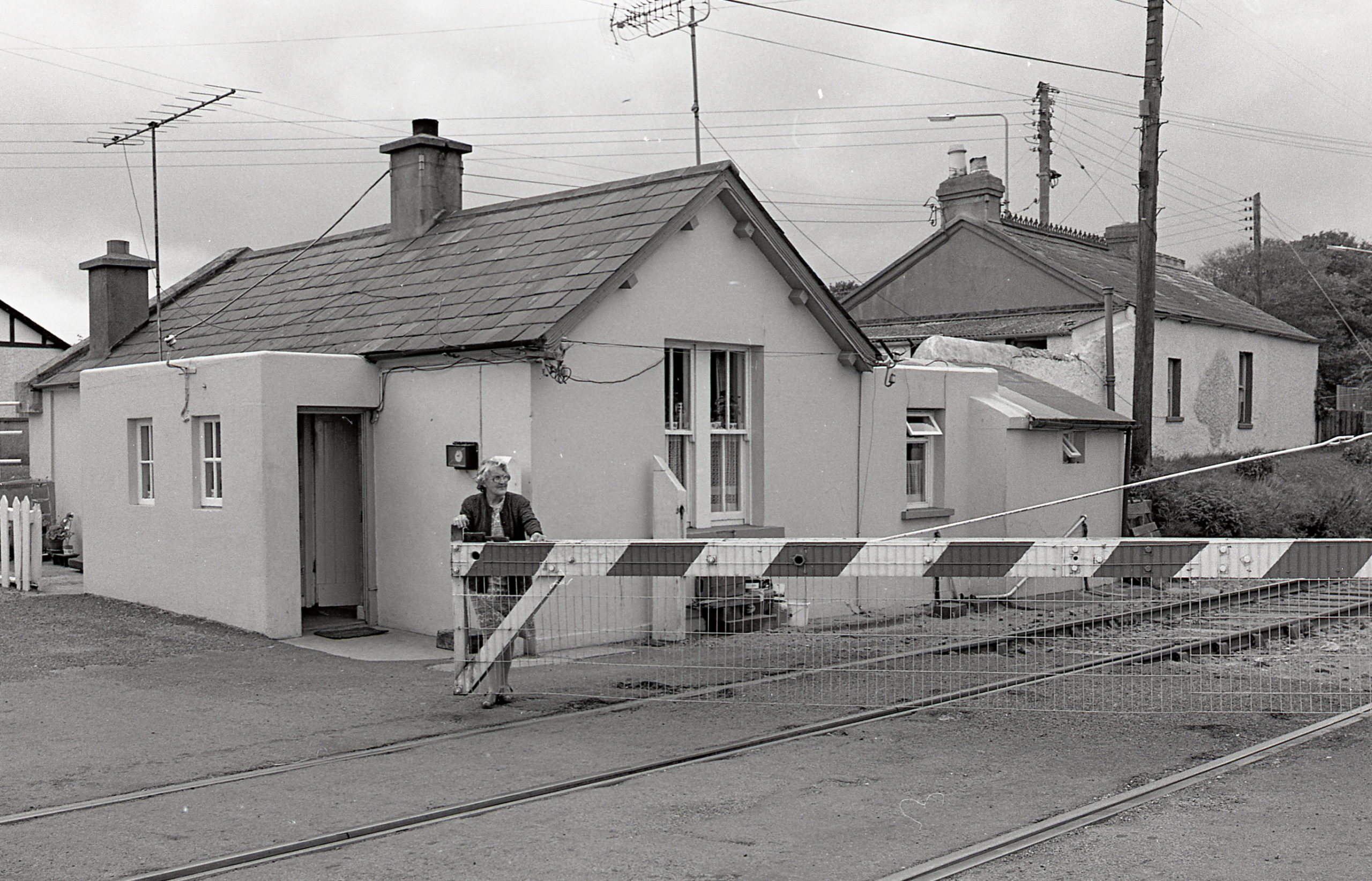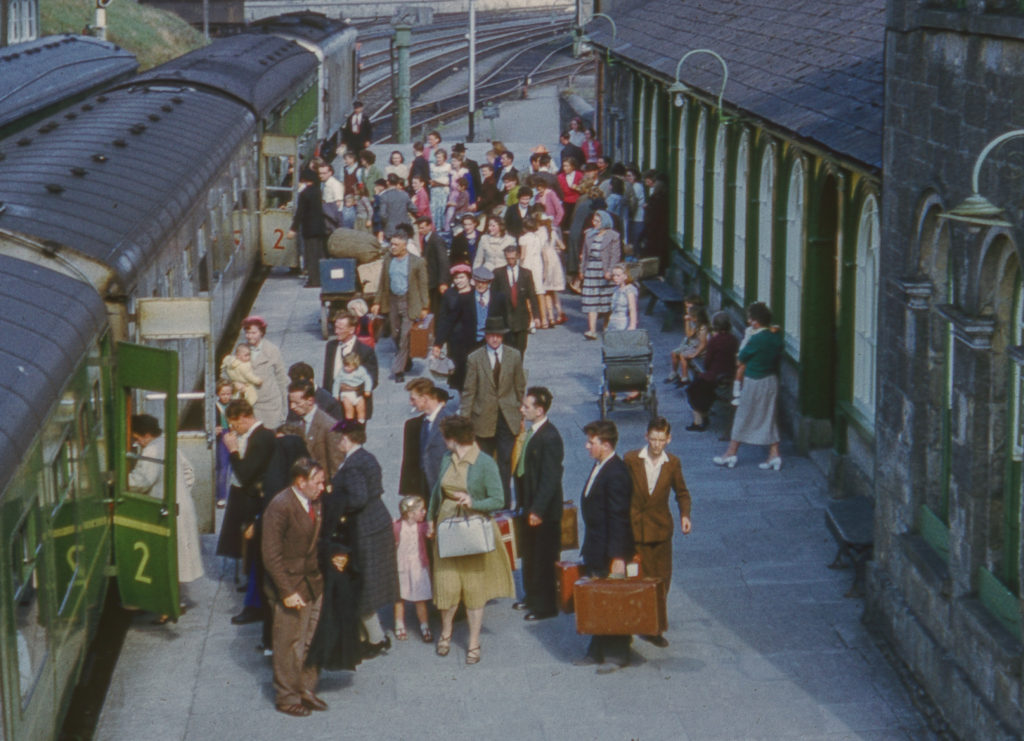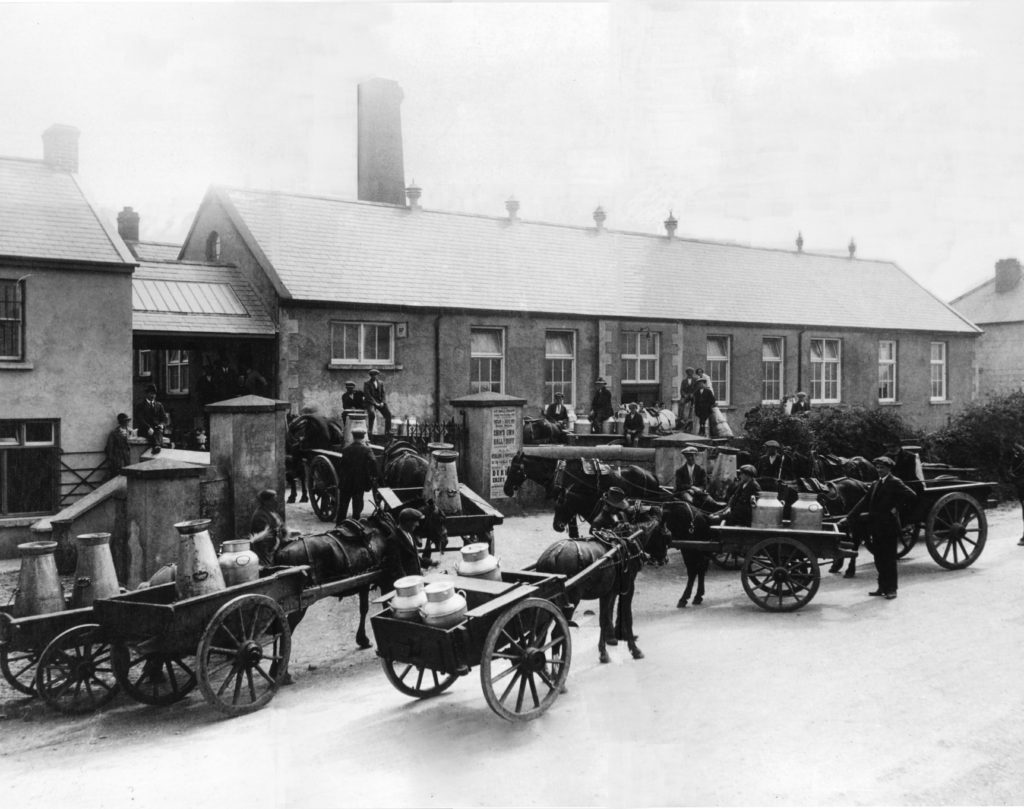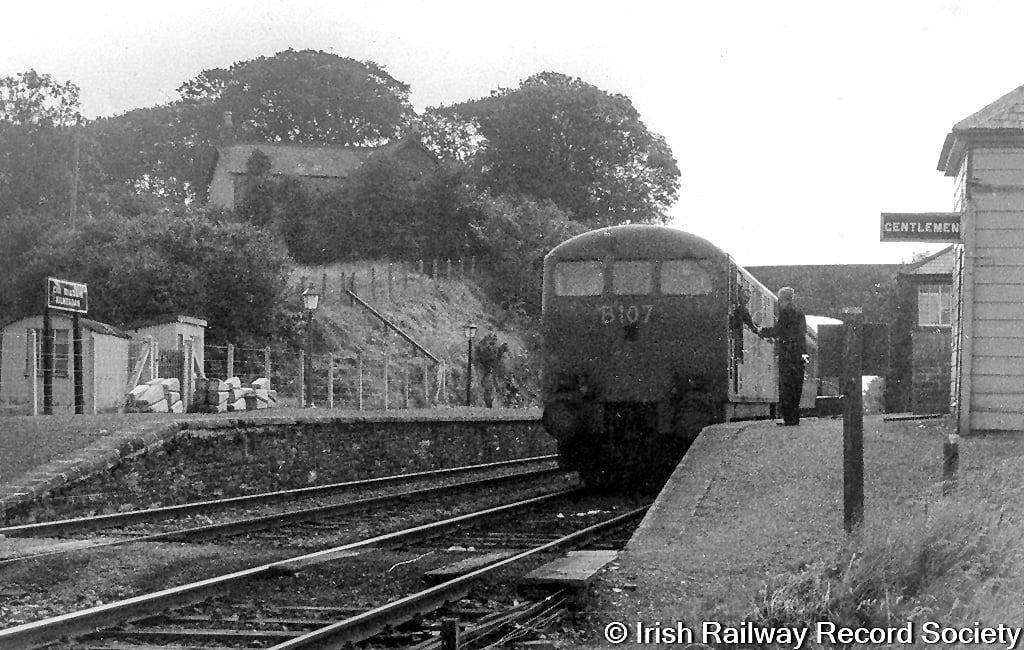
GNR Claremont Gates 05 Sept 1980 ©PaddyScully / IRRS Archive. Ciarán Cooney

© John Langford /IRRS Archive. Ciarán Cooney
The railways were always about much more than goods and commerce, there were the people who used them daily, the people who worked on them every day and the people who left their homes forever via the train to emigrate.
At the start of the 19th Century, the population of Ireland was over 8 million. It had halved to over 4 million a century later – the Great Famine was responsible for over a million deaths, and millions left to seek a better life abroad. The Irish went to Britain, America, Canada, Australia and the first point of leave taking was the train.
This platform at Kilmeaden and every platform at every station throughout the country carries the traces of the tears that were bitterly shed when families were ripped apart forever. Parents had to wait here with their grown children, knowing these minutes waiting for the train that would take them onto Cobh, Waterford, Rosslare and Dublin for the emigrant ships that would carry them overseas were the final minutes they would spend together – emigrants rarely, if ever, returned.
JM Synge wrote an account of it on his travels: “from Tralee to Mallow – at several stations girls and boys thronged in to get places for Queenstown (Cobh) leaving parties of old men and women wailing with anguish on the platform. At one place an old woman was seized with such a passion of regret when she saw her daughters moving away from her forever that she made a wild rush after the train….I could see her writhing and struggling on the platform…. And two men holding her by her arms.”
Also on the move were up to 100,000 seasonal farm labourers who travelled from Ireland to England and Scotland every year. They left for the harvest in the summer and autumn, earning money and sending it back home. For most of the Irish population, the railways were there to help them emigrate.

The stations were hives of activity, with goods and passenger trains coming through every day. Every station had a goods yard where the agricultural produce was brought by the farmers in carts – piles of sugar beet, churns full of fresh milk to go to the nearest creamery, there was one in Kilmeaden. All kinds of grains, turnips, potatoes came through on wagons. Sausages were eagerly awaited on Mondays, they were brought from the station to the creamery, onto the shop and the shopkeeper delivered them to the houses.
Every Friday a box of fresh fish came through and there were eels caught in the Suir. Rabbits, fowl, pheasants from Fermoy and Lismore were sent through to Waterford. The fish was on ice that came from the ice houses of the bigger estates. Goods trains could be very long with up to twenty wagons, full of Guinness, malt barley, sugar beet, fish, rabbits even chocolate crumb for the factory in Rathmore in Kerry. Livestock freight was important business. There were over 1000 fairs to be serviced with 1800 trains doing that. The Dublin cattle market was held every Thursday with sidings at Cabra full of carriages of livestock.
At the end of the 19th Century agriculture in Ireland was booming and the coming of the railways helped this. Livestock could be easily exported to England, and mass-produced British products came to every part of Ireland.

Exchanging ‘electric-train-staff’ (ETS)
by hand at Kilmeaden Station circa 1962,
©Waterford County Museum
Newspapers, letters, parcels came on the railway. Wires were sent through the telegraph office at Waterford – these were the original text message!
Beside every station were houses and cottages, rented to the workers, there was the Station master’s house and further down the track were the houses at level crossings. The woman of the house had to raise the gates at the level crossing and for this she received £1 every Christmas.
Steam trains were of course run on coal and the lumps were so big they had to be broken by sledgehammer! Mysteriously, lumps of coal accidentally fell from the tender as the train passed by certain cottages on the line. The train passed these houses by slowly as there was often a warm apple tart hanging from a branch the guard took in!
As well as the station master and the guard, there was a signalman and then there were the Ganger and the Milesmen who were in charge of track maintenance. The Ganger was the foreman and the Milesmen were the platelayers, so called because they were in charge of five miles of track, which had to be kept in immaculate condition and up for inspection. The grass beside the tracks was hand-cut with scythes.
Perhaps the most unusual cargo were the crates of racing pigeons, sent from Belfast all the way to Dungarvan, where they would be released and fly home to Belfast. Another unusual cargo on the trains were films – it was very common for the latest reel to be delivered to the next town by train.
While the railway was in operation it would have reflected the history of the time in Ireland. Carrying emigrants, exporting goods and the emergence of tourism, it reflected the social, economic, and political changes that marked the period of its existence. It was the hub of the community. Many tears were shed on this platform as family members left for faraway place but it was also the scene of great excitement as families waited for the train to take them on day excursions. News from the outside world was brought by rail, good and bad in equal measure.
Waterford Suir Valley Railway was set up to preserve Ireland’s rich railway history so that this and future generations will never forget the important role the railway played in everyday life in Ireland – nothing else evokes romance and nostalgia in equal measure the way railways do.
